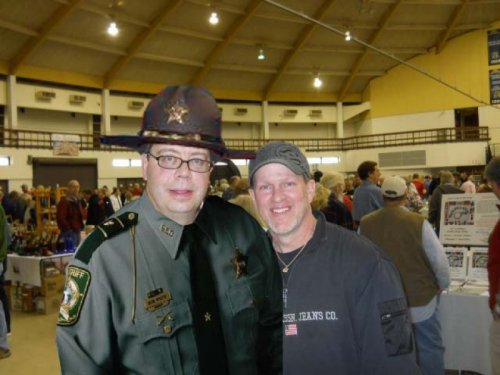Plumbata
Well-Known Member
Earlier this week (before the sway-bar on the truck broke [ ]) I spent a day exploring along the Illinois River. I started with the idea that I wanted to find some dumped slag glass, but that mission morphed into a general quest for whatever I could find. Located 2 areas along the river with victorian ash dump layers showing, around/under very old riverbank trees, where more recent dumped rubble didn't cover the areas very well. Might have to bring a saw and check the spots out.
]) I spent a day exploring along the Illinois River. I started with the idea that I wanted to find some dumped slag glass, but that mission morphed into a general quest for whatever I could find. Located 2 areas along the river with victorian ash dump layers showing, around/under very old riverbank trees, where more recent dumped rubble didn't cover the areas very well. Might have to bring a saw and check the spots out.
Anyway, along 1 particular stretch of river there was the normal modern broken glass, but interspersed were plenty of fragments from open pontiled bottles. It struck me as odd, so I decided to spend a while seeing how many pieces I could collect.
I'm pretty certain that every single one was a local "H.G. Farrell's Arabian Liniment Peoria." I think the stuff washed out of rubble and dirt dumped along there sometime in the 40s or 50s. It would be nice if there was a pontil era bottle dump there that I could go crazy in, but won't be holding my breath.


H.G. Farrell on ebay
Only 1 base is larger than the others, and it may have just been the larger size of the liniment. After arranging and sorting the pieces I noticed that the bottles with the thickest glass had the biggest and most deeply set pontils, and the thinnest bases had very delicate and small pontils. Makes sense, but I had never really thought about how each pontil was consciously created specifically for the bottle at hand; tailored according to the requirements of each piece.
Also, I noticed where what appeared to be a string of glass from the pontil "blob" had fallen across the base of the bottle, extending from the pontil to the edge of the base. The only way I can imagine this happening would be if the bottle was upside down, or at least horizontal when being empontiled.
So this leads to a few questions; in what position was an open pontiled bottle held when being affixed? Did it differ by the glasshouse or individual, or was there a proven and tested process employed by most manufacturers back then?
Anyway, along 1 particular stretch of river there was the normal modern broken glass, but interspersed were plenty of fragments from open pontiled bottles. It struck me as odd, so I decided to spend a while seeing how many pieces I could collect.
I'm pretty certain that every single one was a local "H.G. Farrell's Arabian Liniment Peoria." I think the stuff washed out of rubble and dirt dumped along there sometime in the 40s or 50s. It would be nice if there was a pontil era bottle dump there that I could go crazy in, but won't be holding my breath.


H.G. Farrell on ebay
Only 1 base is larger than the others, and it may have just been the larger size of the liniment. After arranging and sorting the pieces I noticed that the bottles with the thickest glass had the biggest and most deeply set pontils, and the thinnest bases had very delicate and small pontils. Makes sense, but I had never really thought about how each pontil was consciously created specifically for the bottle at hand; tailored according to the requirements of each piece.
Also, I noticed where what appeared to be a string of glass from the pontil "blob" had fallen across the base of the bottle, extending from the pontil to the edge of the base. The only way I can imagine this happening would be if the bottle was upside down, or at least horizontal when being empontiled.
So this leads to a few questions; in what position was an open pontiled bottle held when being affixed? Did it differ by the glasshouse or individual, or was there a proven and tested process employed by most manufacturers back then?


